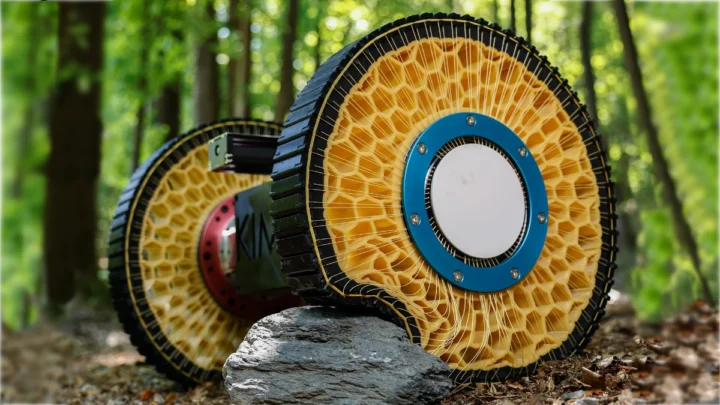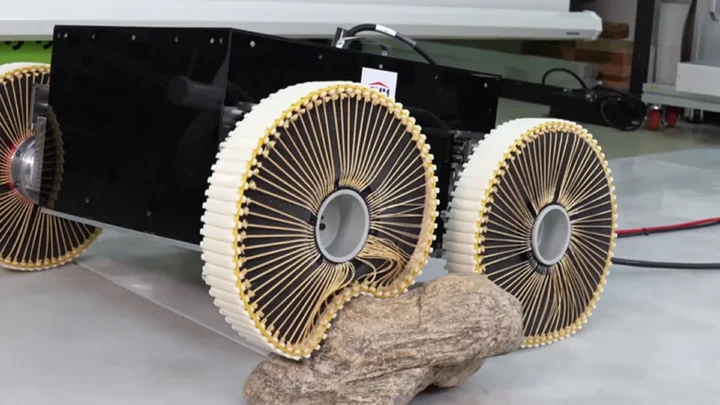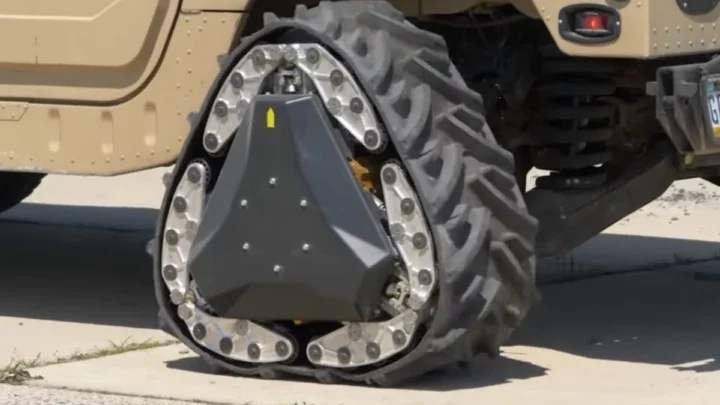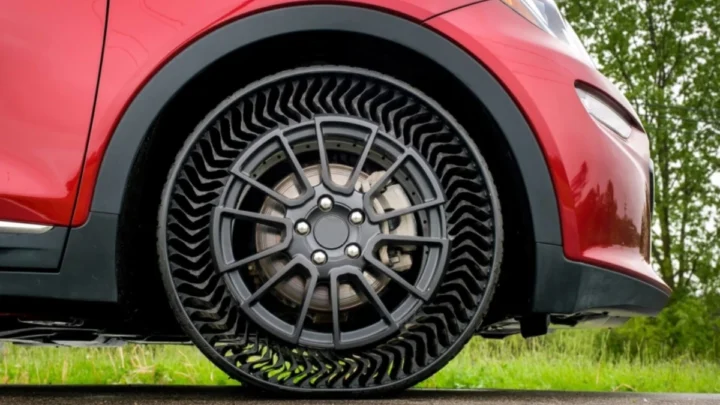Inspired by the surface tension of a drop of liquid, researchers have created an adjustable wheel that changes shape in real time, easily handling uneven surfaces and high obstacles. This opens the door to the development of wheelchairs or mobile robots that can better navigate difficult terrain. This is the level of science fiction!

After all, you can still reinvent the wheel.
The basic components of cars, trucks, and bicycles, wheels are so ubiquitous that we often take them for granted. However, when it comes to wheelchairs, their poor performance on uneven surfaces or obstacles means that people in wheelchairs are, for the most part, limited to staying “on the road.” The same thing happens with mobile robots, among other examples.
Now, a Reinvented by a group of Korean researchersliterally, wheel, as an adjustable wheel was developed that changed shape in real time to overcome obstacles on the ground and allow travel off the beaten path.
Okay, maybe “reinventing the wheel” is an exaggeration. A few years ago, tire giant Hankook teamed up with Seoul National University and Harvard University to create origami-inspired transformer wheels.
Several years ago, student Akeem Ngwenya developed a “roadless” wheel system, whose tread can be adjusted from narrow to wide by turning a screw. Among other things, NASA has made tires for its rovers made of a nickel-titanium alloy that can be deformed to the axle and then return to their original shape.
We can see the three wheels as mentioned respectively:
The problem caused by uneven or obstructed terrain can be overcome by using a tracked system, a mechanism specially designed to increase the surface area of the wheel. However, the tracked system is limited to relatively low speeds and consumes more energy than a wheeled system due to the higher friction resulting from the greater contact between the system and the ground.
Using airless – or non-pneumatic – tires to cover difficult terrain offers an advantage, particularly because they are resistant to punctures, leaks and blowouts. However, their rigidity means that they are not very good at overcoming obstacles, especially tall ones, because they are less deformable or less able to adapt to the terrain they cover.
The inspiration came from the surface tension of a drop of liquid.
So, inspired by the surface tension of a liquid droplet, scientists have created a wheel with variable stiffness that can overcome rough terrain and obstacles, while maintaining the advantages of a regular wheel running on flat ground.
The surface tension of a liquid results from an imbalance in the attractive or cohesive forces between its molecules. While a molecule in a bulk liquid experiences cohesive forces with other molecules in all directions, a molecule on the surface of a liquid experiences only internal cohesive forces.
In a droplet, as the cohesive force of the surface molecules increases, the The net force pulling the liquid molecules inward also increases.Which caused the drop to return to a circular shape.
A key aspect of the deformable wheel is the “smart chain structure,” which involves a chain of blocks around the outside of the wheel connected by wire to opposite sides of the central hub. By varying the distance between the sides of the cube, the researchers were able to change the length of the spokes, and thus the shape of the outer chain of blocks.
Increasing the distance between the axles shortened the spokes, pushing the chain mass inward and creating a circular wheel for rapid movement. Shortening them lengthened the spokes of the wire and loosened the mass from the chain, allowing it to deform and pass through obstacles it encountered.

Researchers Test the adaptive wheel on a two-wheeled wheelchair and a four-wheeled vehicle. I discovered that each one could adapt and drive over large steps and irregularly shaped rocks with a diameter of 1.2 times the wheel's diameter.
The video above shows how the two-wheeled wheelchair system, weighing 120kg, easily covers uneven terrain and grass – although the chair’s extreme forward tilt makes one worry about the safety of its eventual occupant. Investigators have not released video of the four-wheeled vehicle in action, but images are below.



